The second dive, carried out on July 22nd was launched at 10:40 am. This dive being shallower than the first one, 2950 meters, the descent was shorter, arriving at the bottom around 12:20 pm.
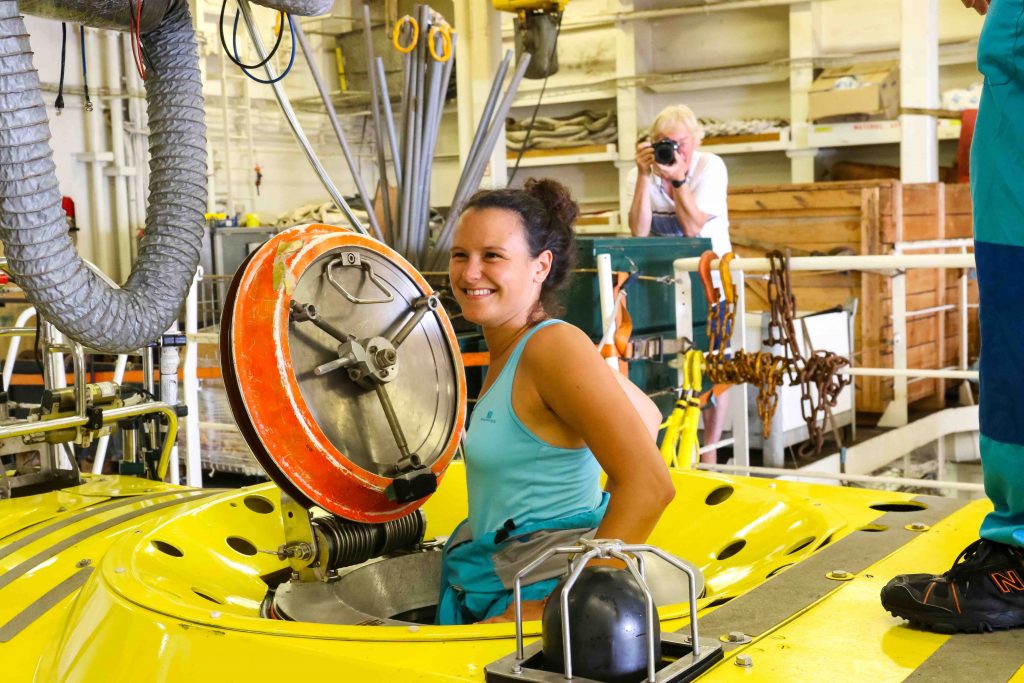
Lena’s departure for her dive P. C. Hamelin © Ifremer 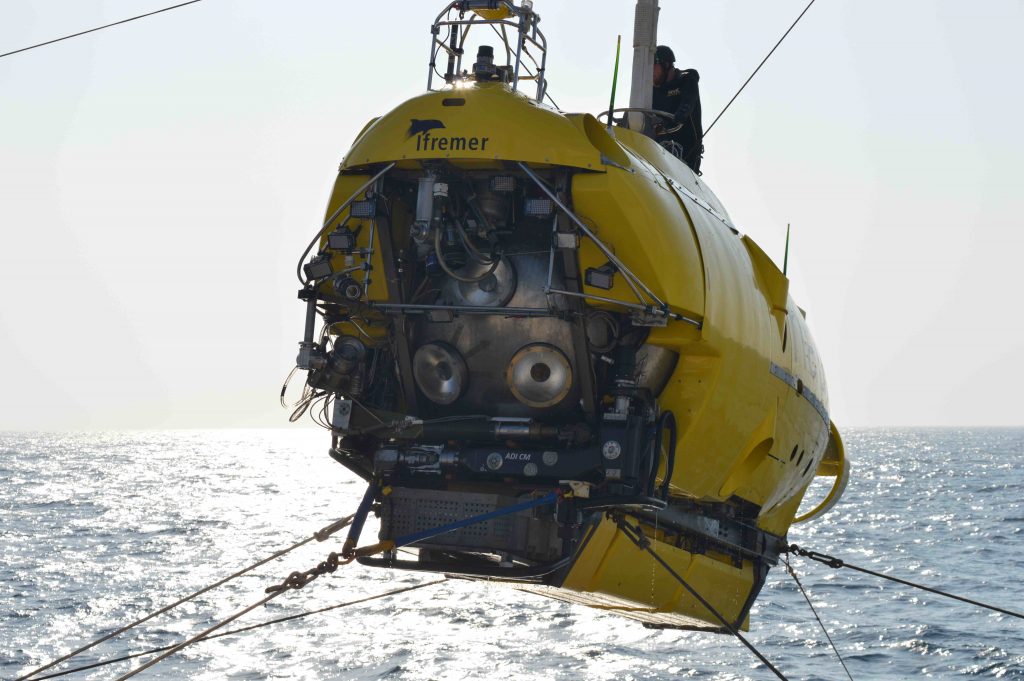
The Nautile departs. P. F. Lombardi © Ifremer 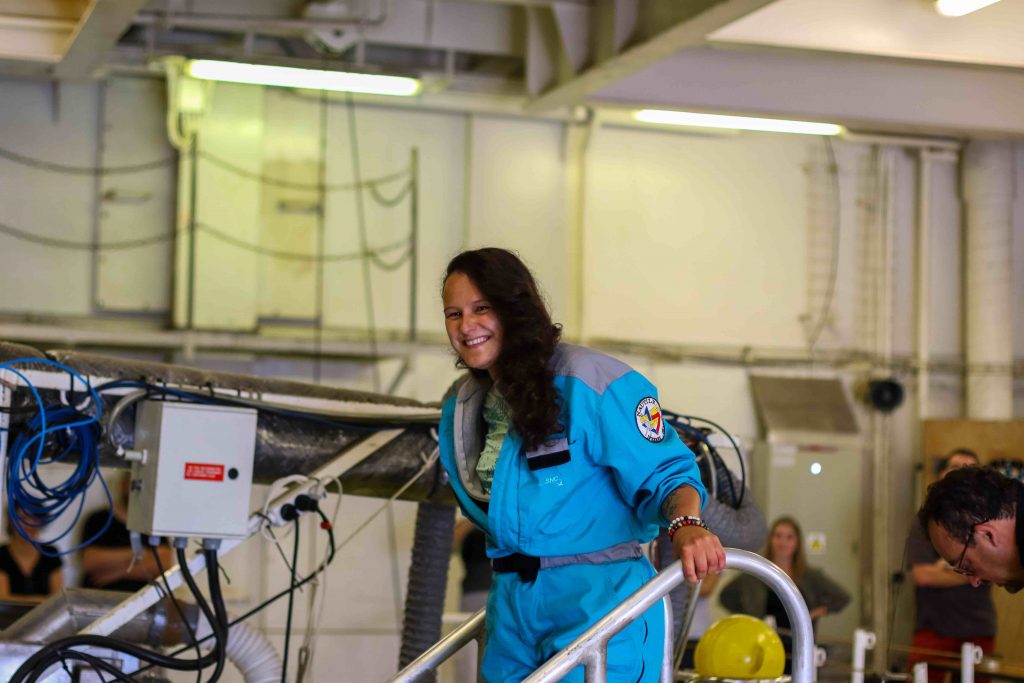
Lena’s arrival with fantastic data and samples. P. C. Hamelin © Ifremer
The profile of this dive is located on the northern part of the transform fault and therefore crosses a 50 Ma old area of the oceanic crust. This area is therefore highly sedimented, which is making it complicated to characterize the different lithologies. We covered about 3 km up to the plateau.

The first structures are visible at a depth of about 2780 metres. These are horizontal sedimentary layers that are more or less consolidated. A few meters higher, the first “hard rocks” outcrops appear, but seem very altered. They are very hard and difficult to sample. These are more and more numerous as we go up, always massive and covered with sediments.
At a depth of 2270 metres, some flat and elongated structures appear. They are oriented 6°N parallel to the slope. The lithology is different from the massifs observed previously and small fractures with the same orientation are visible.
From this point moving up, more blocks are visible, likely falling from the top.
In a similar fashion to what was previously described further east, we expected to find on the plateau a carbonate platform. These structures are believed to be evidence of a past emergence. However, from a depth of 1800 metres, the landscape change dramatically, becoming very flat, covered in a dark manganese crust. We find this sort of lithology to the top.
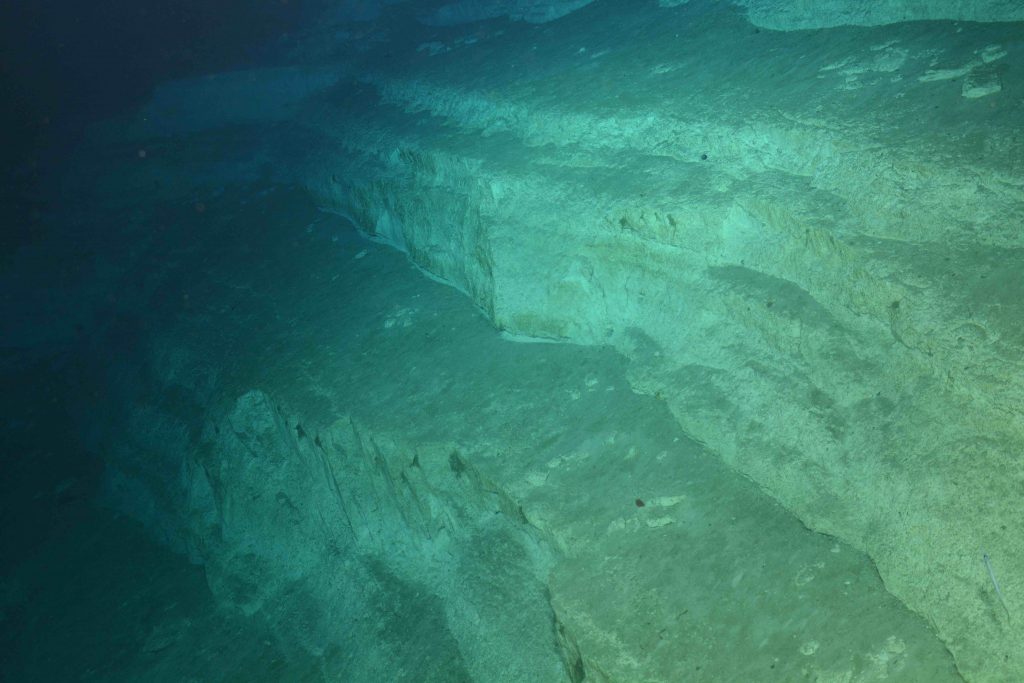
Sedimentary layers © SMARTIES Cruise 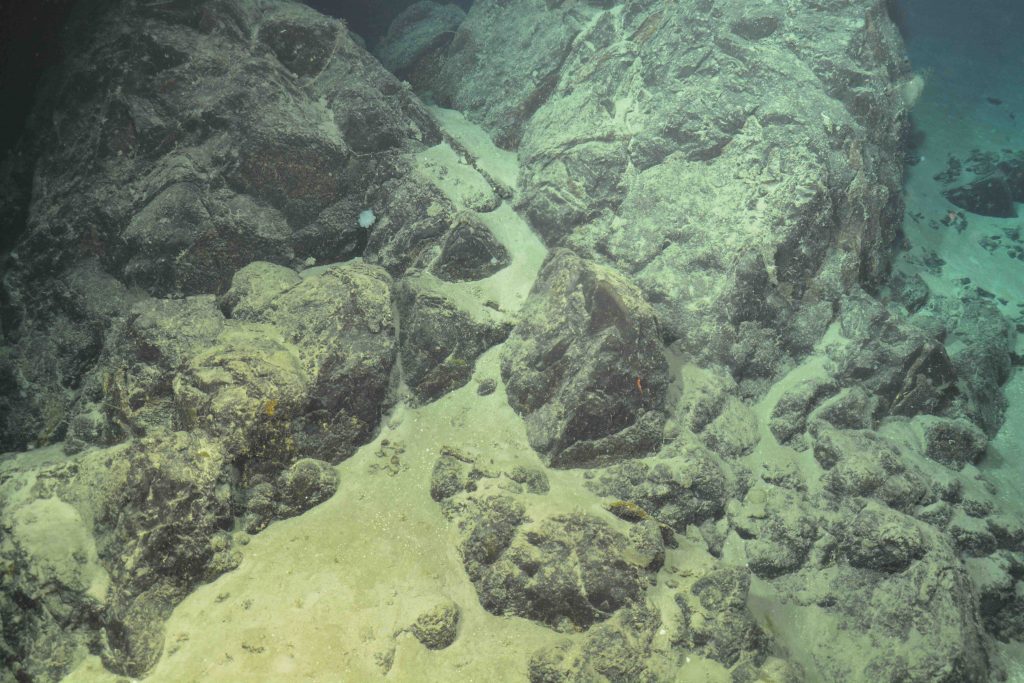
First rock outcrops © SMARTIES Cruise 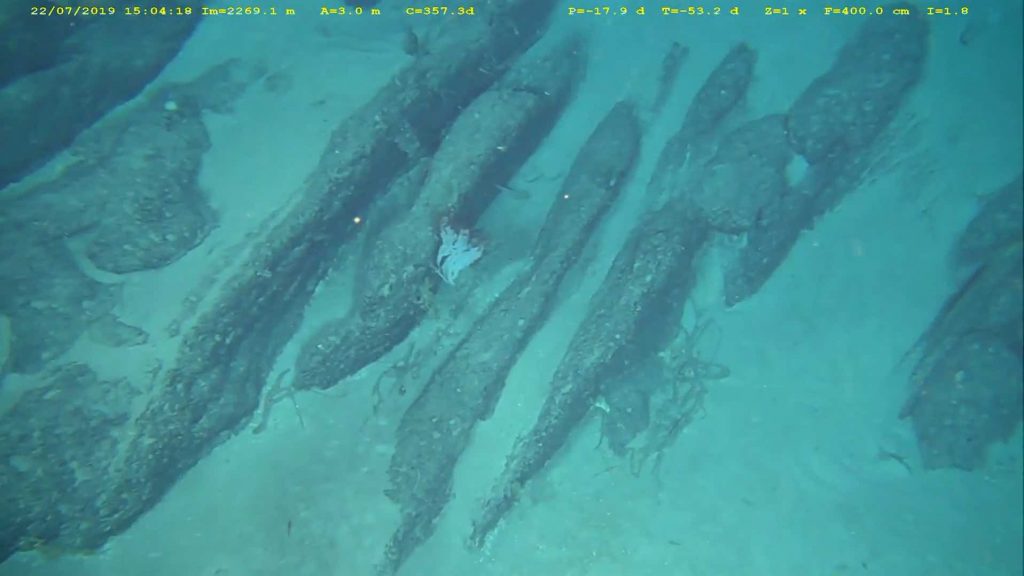
Carbonate © SMARTIES Cruise 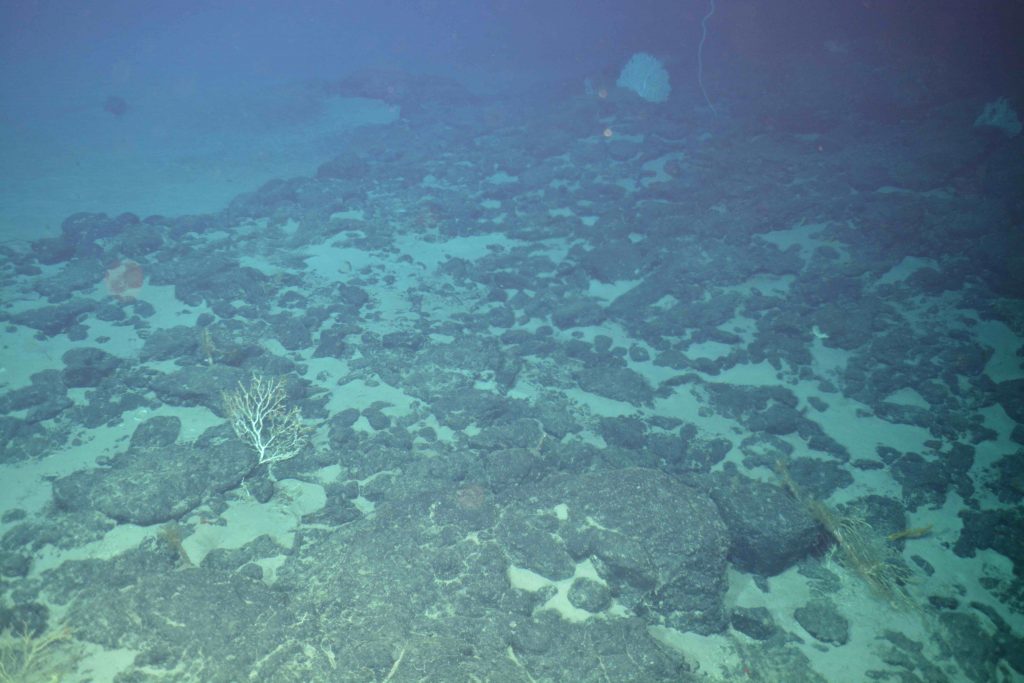
Arrival on top of the plateau © SMARTIES Cruise
We left the seafloor around 5:30 pm, after 5h on the bottom. A total of 9 samples were collected, most of them are very old basalts strongly altered with a very thick manganese crust. A carbonate was sampled but deeper than we expected, 2270 metres.
By L. Verhoest